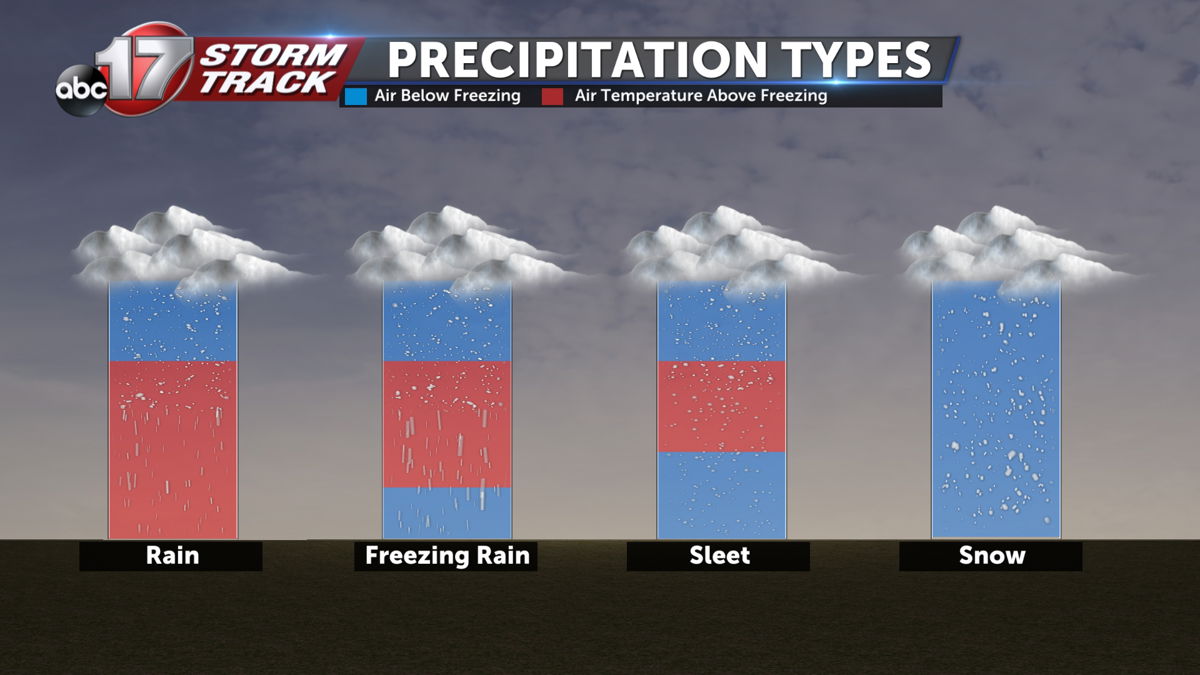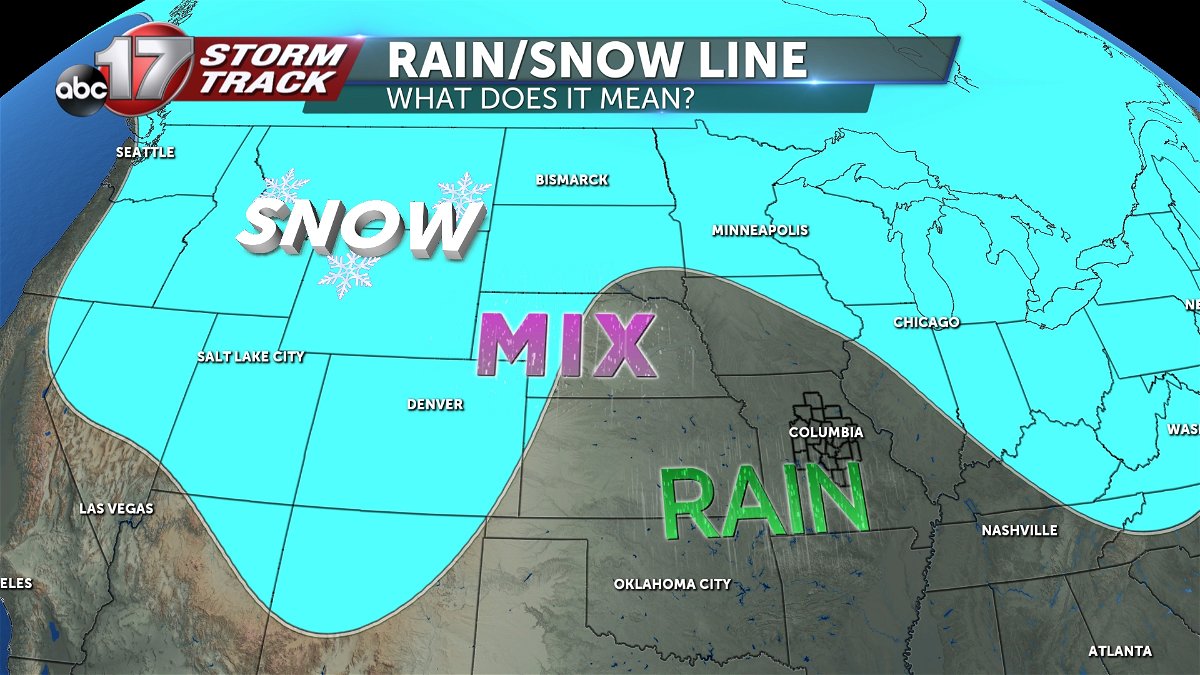The science behind the 540 line and how it helps predict winter weather
Winter weather is fast approaching Mid-Missouri as the average highs continue to decrease. This puts us one step closer to the chance for winter weather precipitation.

There are four separate types of winter precipitation including freezing rain, rain, sleet, and snow. Each begins as snowfall near the original clouds that produces it, but is transformed based on characteristics of a warm layer and its depth/ height. There is a way in which we can figure out where this transformation of precipitation type occurs, and its called the 540 line.

The 540 line is not a physical line that you can see in the atmosphere. It is brought on by thickness in geostrophic heights in the atmosphere. The reason this line in models is so important, is it typically references the freezing mark at the surface. To the north of this line, precipitation falls as snow. To the south of this line in the northern hemisphere, precipitation falls as rainfall. As you find your way at or just outside of this line, you will find a mix of multiple different types of winter precipitation. This area, is typically the hardest to forecast and allows for a degree of uncertainty in forecast.
If this line were to move further north or south, a forecast can change from measurable snow to just rainfall in a short amount of time. This is where a meteorologist must use their expertise and experience in forecast to find the most probable outlook to to display and convey to the public.
